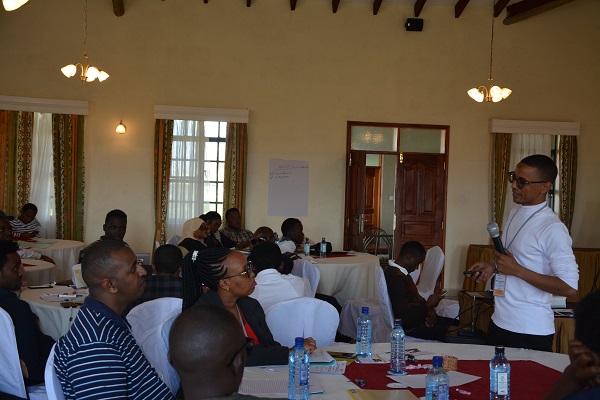
Social media is the new arena of violent extremism with their strengths being Facebook, Twitter and YouTube stated Mr. Abdulswamad Alawi. He added that terrorist organizations use social media platforms to recruit, train and communicate with their followers, supporters, donors and potential recruits.
It was noted in the presentation that the main aim of violent extremist messaging is to spread their ideological thoughts, propaganda and their activities/accomplishments to the online world. Mr. Abdulswamad Alawi highlighted that the reason as to why the Internet is the new hub for terror activities was because the social media is cheaper, easier, faster and effective method of communication; and the groups can be able to deliver massive content of their work to a large audience at a very short time. Through the social media, extremists deliver appealing and interactive messages to the public.
With regard to the ways in which violent extremists use the Internet, the following points were shared;
I. Psychological Warfare; to disseminate hate videos such as (executions, bombings, courageous extremists, and pictures and videos of young children trained to kill, among others.
II. For publicity and propaganda; the power of information is unimaginable, hence violent extremists use pictures, videos and blogs to share their rhetoric
III. Information generation and fund raising; extremist organizations receive information form their sympathizers on their ideologies and they also receive donations from well wishers who wish to commit to their course. This is made possible through soliciting donations over the Internet and thus leading to the many suits on Internet fraud and Cyber-Crime.
IV. Recruitment and Training; the Internet has made it very easy for the dark world to recruit members from a remote area without physical contact. The content of training manuals is available online.
Mr. Alawi mentioned that violent extremism should not be tackled solely through measures conceived by law enforcement, intelligence services, and the military. An effective response would mean bringing members of the affected community together with policymakers and creating a multilayered plan that takes on all of the forces that lead to radicalization.
He concluded by stressing that as long as people from different backgrounds are treated as “the other,” there would be room for extreme hate discourse, which in turn breeds disaffection.
“Authorities should promote community identity on the basis of values, rather than ethnicity, nationality, or culture. This can address the reasons young people find greater integration and recognition in the “digital caliphate” than in their own communities and everyday life.”
He resolved; through political participation, communities and young people have the will to become familiar in advocacy and capacity building to think independently, reflect critically on extreme narratives, and challenge the extremists’ ideologies.


